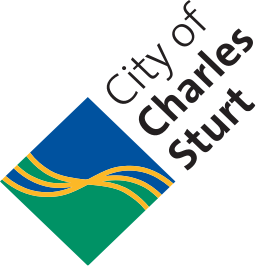At the City of Charles Sturt, we have some of the most beautiful beaches in South Australia. Our 11.5km of coastline includes beaches and sand dunes from Semaphore Park to West Beach.
Our dune and coastal zone is the buffer between the land and sea. It's a special place to live, play and relax.
Before European settlement the back of our dunal system was swampy. The area from West Beach northwards met with the salt marsh and tidal estuary that is now West Lakes.
Our local coastal area is home to a rich biodiversity of flora and fauna. Local plant species include beach shrubs and groundcovers like Acacia, Native Pigface and Ruby Saltbush. Read more about our Local Coastal Plants.
Our remaining narrow coastal strip is home to a variety of birds, insects and reptiles. Take a walk through the coastal reserve and you might see the Australian Kestrel, Pacific Gull and Bearded Dragon.
Our coastal environment is under pressure from development, public use and climate change.
There are some of the issues affecting our fragile coastal ecosystem:
- illegal dumping
- exotic vegetation
- weed invasion
- disruption to soil
- stormwater discharge
- damage to dunes
- domestic pets
You can help protect our coast
- Keep your dog on a lead at the beach and don't let them wander through the dunes.
- Keep cats inside at night and avoid letting them roam through the coastal reserve.
- Do not dump lawn clippings or general rubbish in coastal areas.
- Do not plant exotic vegetation (including lawn) on public land.
- Plant native coastal plants in your garden (you can find these at local nurseries).
- Use designated paths when going to and from the beach.
We will continue to work with various stakeholders to protect our beautiful coastline. You can view two presentations below detailing the history, challenges and opportunities of managing our coastline.
Our coastal environment is very fragile. Our local coastal plants have adapted to harsh weather conditions over thousands of years. Their roots and foliage can bind and stabilise the sand dunes. They make a local habitat for native birds, animals and insects.
Stormwater pipes discharged into the Coastal Reserve cause erosion and an increase in weeds. It's better for our environment to have stormwater pipes directed to the roadway or soakage pits. For more advice on directing your stormwater to the roadway or soakage pits please contact Carmine D’Amico (Project Engineer) on 8408 1111.
To help protect our coastal flora and fauna, we have Vegetation Management Plans for Tennyson, Semaphore Park, Henley South & West Beach and Henley Beach to Tennyson.
We're working with the State Government and community groups to protect our natural coastal areas. Our dune care groups spend many hours enhancing and protecting the dunes. They work in community education, maintenance, planting and propagation.
The Tennyson Dunes are among the last remaining remnant of a tertiary dune system in Adelaide.
They are environmentally significant. The dunes are home to a springtime splendour of native flowers, shrubs and trees that provide habitat and sanctuary to native plants and animals.
Formed over thousands of years, these dunes were host to vibrant natural ecosystems and played a critical role in protecting inland areas from storm-caused sea intrusions. Left to their own devices, the dunes naturally eroded and replenished through a seasonal cycle driven by wind and wave action.
For more information contact the State Government Department for Environment and Water via the
Natural Resources Centre - Black Hill
8336 0901
DEW.AMLRBlackHillOffice@sa.gov.au
More information
Mark Hannan
Strategic Planner - Open Space Environmental Management
84081138
River Torrens Linear Park is a lush green space with sweeping lawns and large trees. It has pockets of revegetated biodiversity along its 8.4 kilometres.
The park forms part of the southern boundary of the City of Charles Sturt and is shared with the City of West Torrens.
Historically the River Torrens had no established outlet to the sea. Instead, flood waters would sit behind the large barrier dune system. This created a swampy region that became known as the 'Reedbeds' and is now known as West Lakes.
The Torrens Outlet was constructed and completed by 1939. It helped in the development of the western suburbs which before were often flooded.
More information
Garry Griffiths
Natural Resource Management and Open Space Liaison Officer
8408 1303
Read our River Torrens Linear Park Management Plan Hindmarsh Bridge to the River Mouth.
